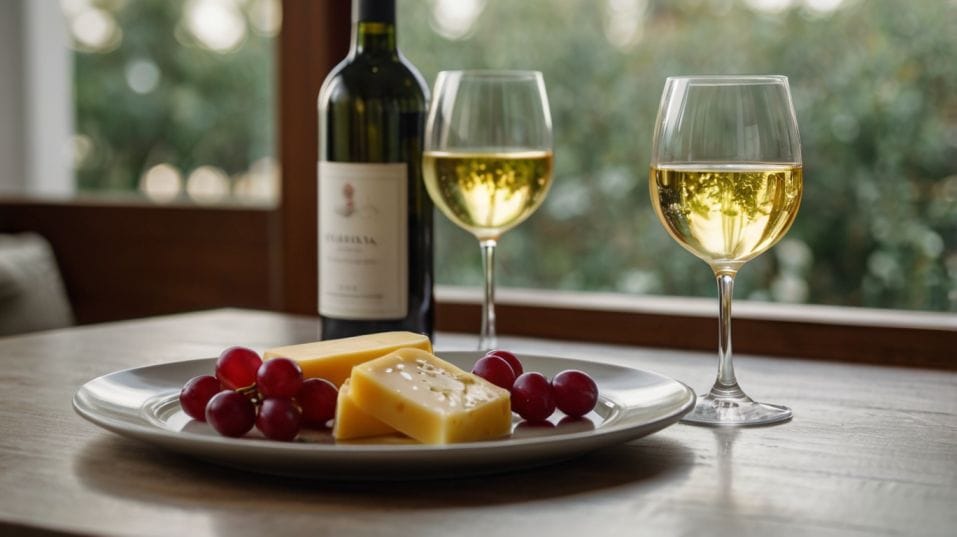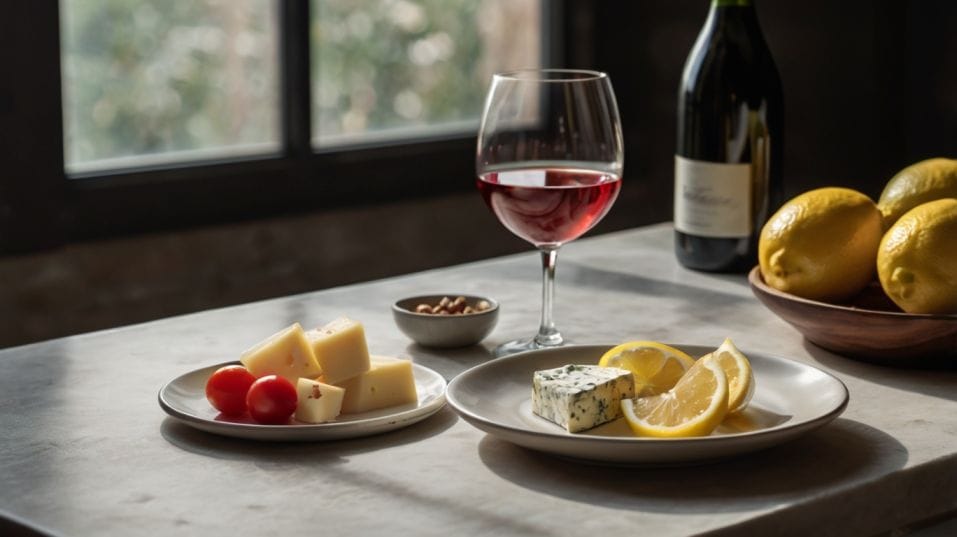Why Acidity Makes Wine Taste “Fresh”
Discover how acidity gives wine its freshness. Learn to taste it, pair it, and choose better bottles—no jargon, just clarity and confidence.

What makes a wine feel electric on your palate—zesty, mouthwatering, alive? The answer is acidity. It’s not just a buzzword for sommeliers; it’s the hidden force behind that snap of freshness that keeps you sipping.
Whether you're new to wine or just starting to notice what sets one bottle apart from another, learning how acidity works will sharpen how you taste, pair, and choose wines that truly excite you.
What Acidity Actually Does in Wine
Acidity is one of the core structural elements in wine, along with alcohol, tannin, sugar, and body. But unlike the others, it’s often the least understood—especially because it’s invisible.
You can’t see acidity in the glass. You rarely hear it discussed on the label. Yet it’s one of the first things your mouth registers. Acidity brings tension and brightness.
It keeps wines from feeling heavy or cloying. It also makes flavors pop: citrus, green apple, cranberry, pomegranate, lime zest—these notes all stand out more when acidity is present.
In wine chemistry, the major acids are tartaric, malic, and lactic. Tartaric is the most stable and most dominant in wine grapes. Malic acid is sharper and often compared to green apple.
Lactic acid, which forms during malolactic fermentation, is softer and creamier—more yogurt than lemon.
You don’t need to memorize these, but recognizing how acidity shapes texture and taste helps you understand why a wine feels crisp, lush, or somewhere in between.
Without acidity, wine loses shape. Even ripe, high-quality fruit can taste dull without enough acid to carry it. Acidity doesn’t just balance flavor—it energizes it.

How Acidity Shows Up in Different Wines
You can’t rely on the color of a wine to guess its acidity, and not all white wines are automatically acidic.
The grape variety, climate, vintage, and winemaking choices all affect how much acidity ends up in the bottle—and how that acidity feels on your palate.
Cool vs. Warm Climates
Cool-climate wines tend to retain more natural acidity.
That’s why Chablis (made from Chardonnay in northern France) tastes sleeker and more cutting than a buttery Chardonnay from California’s Central Valley. The grapes in cooler areas ripen slowly, developing flavor while preserving acid.
White Wines with High Acidity
High-acid white wines include Sauvignon Blanc, Riesling, Albariño, and Chenin Blanc. Each of these shows acidity differently.
A Loire Sauvignon Blanc might hit with piercing citrus and grassiness, while a Mosel Riesling can be both tart and slightly sweet—thanks to the balance acidity provides.
Acidity in Red Wines
Red wines can have acidity, too—sometimes surprisingly so. Northern Italian reds like Barbera and Nebbiolo are famously high in acid. That’s what gives them their food-friendliness and age-worthiness.
Pinot Noir, especially from cooler climates like Oregon or Burgundy, can also have a fresh, juicy acidity that makes it incredibly drinkable. Lower-acid reds, by contrast, often feel plush but can finish flat if they lack structure.
Sparkling Wines and Acidity
And then there are sparkling wines, where acidity isn’t just helpful—it’s essential. The tension between acid and bubbles is what gives Champagne its signature sharpness.
Without that bright, slicing acidity, sparkling wine would feel sweet and weightless. The acid keeps it serious.
Tasting Acidity on Your Palate
If you're not sure how to identify acidity, start with how your mouth reacts. A wine high in acidity will make your mouth water—literally.
After you swallow (or spit, if you’re tasting multiple wines), pay attention to your salivary glands. Are they suddenly active, like you bit into a lemon? That’s the acid working.
Comparative Tasting
Compare two wines side by side for contrast. Try a high-acid white like Albariño next to a rounder white like Viognier.
You’ll notice the difference in sharpness, in how long the flavors linger, and how “alive” each wine feels. In reds, try Chianti versus a California Zinfandel.
One feels zippy and mouthwatering; the other, fuller and rounder. Neither is better—it’s about context and balance—but one will almost always feel fresher.
How Temperature Affects Acidity
Temperature also matters. Acidity is sharper when the wine is colder. That’s why many high-acid whites are served chilled: it intensifies the crispness. But overly cold wine can mute flavor too much, making it feel lean or one-dimensional.
A good trick? Let a wine sit in your glass for five minutes. Notice how it softens, broadens, and evolves. What felt razor-sharp at first might open into something layered and inviting.
Why Acidity Matters When You’re Pairing Wine and Food
When pairing wine with food, acidity is your best friend. It resets the palate after every bite, especially with fatty, salty, or rich foods.
High-acid wines act like a squeeze of lemon over grilled fish or a splash of vinegar in a salad—they cut through fat, lift flavors, and create contrast.
That’s why fried chicken works with Champagne. Why goat cheese loves Sauvignon Blanc. Why tomato-based sauces go better with acidic reds like Sangiovese than with low-acid, high-alcohol reds.
And why even slightly sweet wines like Riesling can still refresh your mouth when acidity is high.
Matching Acidity in Wine and Food
Acidic wines also help when the dish itself has acidity—like anything with lemon, vinegar, or tomato.
A wine with equal or higher acidity will match the energy of the dish. A wine with lower acidity might feel dull or flabby in comparison. Understanding this helps you choose wines that elevate meals instead of fighting with them.
How Acidity Connects to Wine Quality
Freshness is often a marker of quality. Not in the price tag sense, but in the sensory one. A good wine should have some tension. Even the richest, fullest wines benefit from balance—something that keeps them from feeling heavy or monotone.
Wines made with intention usually preserve acidity, even when the style leans ripe or opulent.
That’s one reason why some wines from high-altitude vineyards or volcanic soils stand out—they combine ripeness with surprising freshness. You feel it as a lift on the finish, a kind of brightness that makes the wine feel structured and complete.
That’s also why some wines age better than others. Acidity acts as a natural preservative. It helps wines hold up over time, allowing complex secondary flavors to develop while keeping the wine’s core intact.
Low-acid wines may taste great young but often fade quickly. High-acid wines can evolve for years or even decades.
Final Thoughts
Acidity is what keeps wine from falling flat. It’s the pulse that keeps a wine vibrant, the structure that holds flavors in place, and the element that connects wine to food effortlessly.
Learning to recognize acidity—and appreciate its role—gives you sharper instincts when tasting, buying, and pairing wine.
So the next time you open a bottle, pay attention. Swirl it. Taste it. Ask yourself: does this wine make your mouth water? Does it feel alive?
If it does, that’s acidity in action. Try a new grape, revisit an old favorite with fresh eyes, or taste the same wine at different temperatures. Let freshness guide you—and make it part of your ritual.




